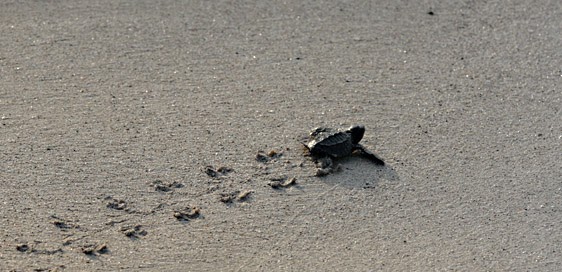Recycling campaign in Easter Island.
(c) Dirección Sociocultural de Chile
By
Marcela Torres
Tons of plastic are carried by marine
currents to coastal destinations, such as Easter Island. This is compounded by the
garbage generated by tourists and residents within the island. Hence, this
paradise in the Pacific is in trouble and we must help find a solution.
“End plastic pollution” is the theme for Earth Day 2018. Celebrated each year on April 22 since 1970, Earth Day marks the anniversary of
the birth of the modern environmental movement. This year, the aim is to provide
the information and inspiration needed to fundamentally change human attitude
and behavior about plastics.
Oceans of Plastic
A study conducted by researchers from three
universities in the United States and published by the Journal Science
estimated that “275 million metric tons (MT) of plastic waste was
generated in 192 coastal countries in 2010, with 4.8 to 12.7 million MT
entering the ocean. Population size and the quality of waste management systems
largely determine which countries contribute the greatest mass of uncaptured
waste available to become plastic marine debris.”
Among the top 20 countries generating the
greatest amount of ocean-bound trash, China is ranked first and the United
States 20th. The rest of the list includes 11 other Asian countries, Turkey,
five African countries, and Brazil.
(c) University of Georgia
Plastics are non-biodegradable and just break
down into ever smaller pieces as a result of their exposure to sunlight. Known
as microplastics, these pieces measure less than five millimeters and are
approximately the size of a sesame seed. Because of their size, they are easily
ingested by fish and other marine wildlife and quickly enter the food chain,
affecting humans as well.
The Easter Island Garbage
Issue
Located in the South Pacific Garbage Patch,
more than 3,500 kilometers from Santiago, Chile, Easter Island suffers not only
from its own trash generation but also from plastic debris that is washed
ashore by the ocean currents. To learn more about the situation, the non-governmental
organization Race
for Water Foundation conducted studies in the Ovahe and Anakena beaches in 2015.
Attracted by the island’s huge Moai statues,
over 80,000 tourists visit each year this paradise with a size of only 163.6
square kilometers and a resident population of approximately 6,000 people. This
influx of visitors also takes a toll on the island’s capacity to manage waste.
Local authorities estimate that, by 2025, Easter
Island will import 32 metric tons of cardboard, 18 of plastic, 12 of aluminum
cans and nine of glass. However, without a recycling plant of its own, only
one-fifth of its garbage is sent to the continent for recycling. The rest is
taken to the already overloaded landfill.
As I mentioned in a previous post, the
islanders have already made great strides towards promoting sustainable
tourism. Local youth are also actively engaged in cleaning beaches and
ridding them of plastics as much as they can and a music
school was built with reused elements such as aluminum cans, glass bottles
and tires. But there’s still much to be done.
Rapa Nui School of Music and Arts
(c) Imagina Isla de Pascua
How can we help? Refuse and reduce the use of
plastic. If this is not possible, then we can do our best to recycle and/or
remove plastic waste from locations where it will cause most damage. Tackling
this pollution issue is on us! Learn more, look for ways to help, ask authorities to act. Happy Earth Day!



